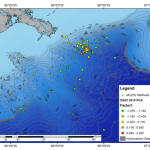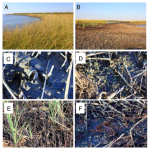The New York Times has a great article out this week, as we near the year anniversary of the Macondo Well blowout and the ensuing horror of the Gulf oil spill.
What has emerged in studies so far is not a final tally of damage, but a new window on the complexities of the gulf, and the vulnerabilities and capacities of biological systems in the face of environmental insults.
While there’s still a lot of speculation, hidden data, and many unknowns, here’s an update on what we know so far:
- Baby dolphin kills are still unexplained. Was it oil toxicity? Was it a virus? Or did we DSN-ers send them our bad Juju?
- Of the 28,000 turtle eggs that were moved in response to the spill, about 51% hatched (in line with expected survival rates – a hesitant yay!)
- Many scientific results are not yet public, since the government’s Natural Resource Damage Assesment (NRDA) process is still ongoing and working to come up with a sum for damages—the money needed to restore the gulf to its pre-spill condition
- Oil droplets in the deep water column were largely gone just weeks after the well was capped (present at less than 2 parts per billion), eaten up by specialized cold water microbes
- Likewise, 200,000 tons of methane were relased into the gulf, but this gas may have been degraded by autumn as well (but different labs reported conflicting data)
- Ashes, ashes, we all fall down. Yep, there seems to be an oil blanket in the deep sea and the muddy sediment looks like a Spongebob graveyard. Dead worms, dead coral, dead starfish (Noooooo, not Patrick!!).
- Although, EPA testing is showing that the dispersant-BP oil combo isn’t more toxic than the oil itself, this news isn’t entirely reassuring since obvious traces of the ‘biodegradable’ Corexit are still very present in the Gulf ecosystem. Long term exposure to chronic, subtle chemicals—isn’t that what causes cancer in humans?
- Researchers from British Columbia calculated that a 50x ‘multiplier effect’ should be used to tabulate the true number of animal deaths. So even though only 115 whales and dolphin mortalities were visually recorded, accounting for unseen deaths this number should be 1115 x 50 = 5,750?!
- Bluefin tuna not as badly affected as feared? Some wiped out, but some spared? Reseacher interviewed being coy..SHOW ME THE DATA! (I’m sure I’ll see it in Nature soon enough…)
- We’re sitting with baited breath to see what happens to the marshes. Will new grass grow this year with such heavy pollution still coating the Louisiana shores? Satellite data suggest more brown marsh lacking new growth (150 square miles versus typically 25-30 square miles).
Clearly the Gulf is not quickly forgetting the effects of the oil — some residents have even flown all the way to London to protest at BP’s annual shareholder meeting.






For those interested, marine biologist also wrote a great opinion piece reflecting on the oil spill:
http://e360.yale.edu/feature/one_year_later_assessing_the_lasting_impact_of_the_gulf_spill/2394/